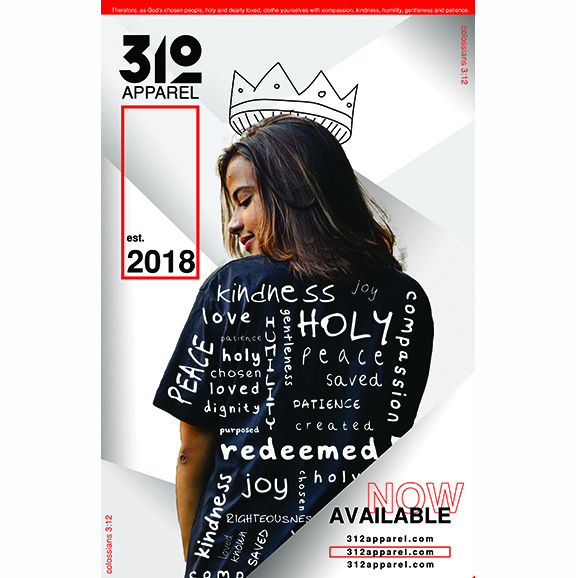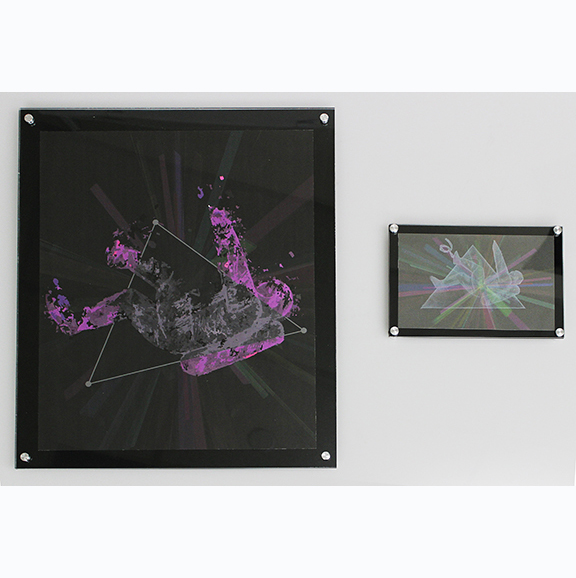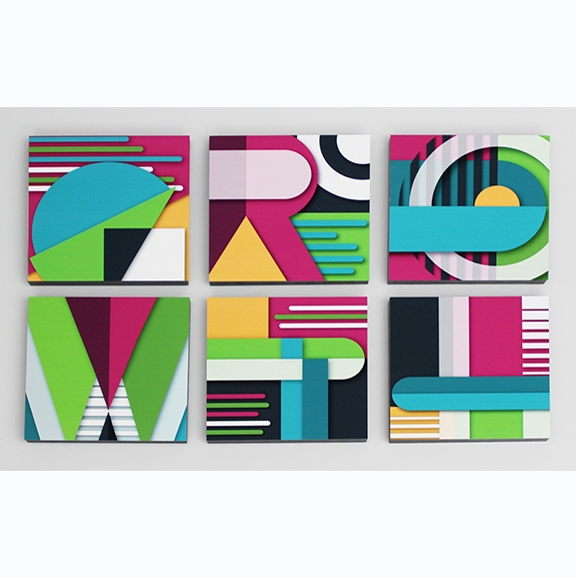

In this degree, designers explore a variety of visual communication design topics dealing with diverse messages and audiences. Students interested in pursuing a career in design, including visual communication design, graphic design, motion graphics, animation, digital media, etc. may apply to the BFA in VCD degree.
Both historical context and contemporary practices are stressed through analog and digital methods, with an appreciation for many modes of Design. Design plays a central role in shaping identity and representation in the lives of individuals and institutions. Students develop the skill-sets and vocabulary of design through studio projects exploring the visual and material culture of design with special attention paid to critical content.
The hybrid nature of design, combining the verbal and the visual, is used to emphasize the graphic designer's particular role as author and entrepreneur. Design for sustainability's vital role in defining an optimal future is expressed through a collaborative and process-based method that emphasizes design thinking.
Learn more about the BFA in Visual Communication Design degree and how to apply: HERE




The Review in Denver, CO hosted by AIGA & the One Club

Within the Art and Art History Program, students have the opportunity to be apart of art organizations.

Senior Studios can be acquired by application and are for advanced students enrolled in at least one credit hour of upper level courses in the Art and Art History Program to work on their creative research safely and independently.
One of the most successful programs we have is the Post Undergraduate Assistantship. Senior graduating students can apply for a Post Undergraduate Assistantship for the year following graduation.
For the B.A. in Studio Art & B.F.A. in Studio Art major requirements, visit the Undergraduate Major. For Minor requirements, visit Minors in Art.
Brandon S. Gellis
Associate Professor,
Visual Communication Design
Co-Director,
Center for Design Thinking
2030. History of Graphic Design. 3. History of graphic language and evolution of graphic communication. Includes an extensive examination of the social forces that shaped the design profession and how in turn design has shaped society. The theories that moved designers to act to remake society are also considered.
2112 [2120]. Graphic Design I. 3 (Max. 6). Explores techniques of graphic design preparation from concept through paste-up to the printed page, both on as a field that engages both the verbal and the visual is stressed. Problems include a variety of experimental and practical approaches that engage historical and contemporary formal and conceptual exercises. Prerequisites: ART 1110 and ART 1115. (Offered fall semester)
2122 [3110]. Computer Graphics I: Coding. 3 (Max. 9). Explores digital art principles in Web spaces through the understanding and use of design tools and techniques. Creative approaches consist of informed planning, thoughtful concepting, strategic wireframe development and creative execution. Projects include explorations of HTML, CSS, and Processing, and time-based media and image manipulation. Prerequisite: ART 1110 and ART 1115. (Offered fall semester)
3112 [2110]. Type, Text & Narrative (Typography). 3. Examines the experimental use of type, its history, structure and background in reference to visual expression, data visualization, messaging, representative power, and time-based and site specific explorations. Advanced explorations in type as concept and critical expression will explore the fields of graphic design and computer visualization. Prerequisites: ART 2000 and ART 2112. (Offered spring semester)
3120. Graphic Design II. 3. Studies advanced graphic design preparation, idea generation, conceptualization, and critical thinking. Sustainable design problems include print and package design and an exploration of historical impact of design for reporduction through analog and digital means. Contemporary socio-cultural issues will be emphasized along with design as an agent for positive change. Prerequisites: ART 2000 and 2112. (Offered fall semester)
3150 [4140]. Computer Graphics II: Video Experiments. 3. Explores digital video, sound and site-specific experiments. Students learn and use experimental digital design tools and techniques to develop site-specific time-based individual and collaborative works. Students also collaborate and install works on campus, town and other venues. Projects include video and sound design and editing, graphic arts, computer graphics and digital art history. Prerequisites: ART 2000, and ART 2112 or ART 2122.
3180. Graphic Design III. 3. Studies specialized and advanced graphic design preparation, idea generation, conceptualization, collaboration and critical thinking, from paste-up through production. All work is executed both on and off the computer. Design problems include print and packaging design. History of graphic design and advanced production methods are discussed. Prerequisites: ART 2000, ART 2112, and ART 3120.
4060. Computer Graphics III: 3D Modeling and Mixed Realities. Explores digital art in 2.5D, 3D and 4D spaces through the experimental use of digital design tools and techniques developing and building digital structures and forms. Projects include explorations in graphic design, 3D modeling and printing, multi-media manipulation and image manipulation. Prerequisites: ART 2000 and ART 2112 or ART 2122.
4120. Senior Portfolio. 3 (Max. 6). Specialized research for the advanced graphic design student who will develop a mature voice and sense of design. Problems include print, packaging, and multimedia design, sustainability and design for social good while also incorporating preparation techniques for job applications and professional skills. Prerequisites:ART 2000, ART 2112, ART 2122 and ART 3140. (Normally offered fall semester)
4400. Internship. 1-3 (Max. 9). Allows students to bridge the gap between theoretical problems solved in the classroom and the real work world. Students are placed in a setting where they perform duties similar to a working environment. Specific arrangements are made through the major area adviser. Students are evaluated at mid-term and finals. Minimum of three contact hours of internship per week for a semester equals an hour course credit. Prerequisites:ART 2000 and 12 hours in the major area. (Normally offered fall, spring and summer)
4425. Graphics Internship. 3 (Max. 9). This course allows graphic design students to better understand real-world design practices, learn about industry standards, and discuss career opportunities and preparedness. Students will be expected to secure internships and meet with an intern advisor regularly, to gain a strong understanding of the graphic design industry. Students are evaluated at mid-term and finals. Minimum of three contact hours of internship per week for a semester equals an hour course credit. Prerequisites:ART 2000 and 12 hours in the major area. (Normally offered fall and spring)
4975. Independent Study and Research. 1-3 (Max. 6). Research options in all creative areas. Students work independently and provide demonstrated ability and background knowledge to carry out self-directed research or creative activity in the research area. Arrangements regarding curricular obligations and meeting times are made with the instructor in advance. Prerequisites: ART 2000 and 12 hours of art in research area and prior consent of instructor.